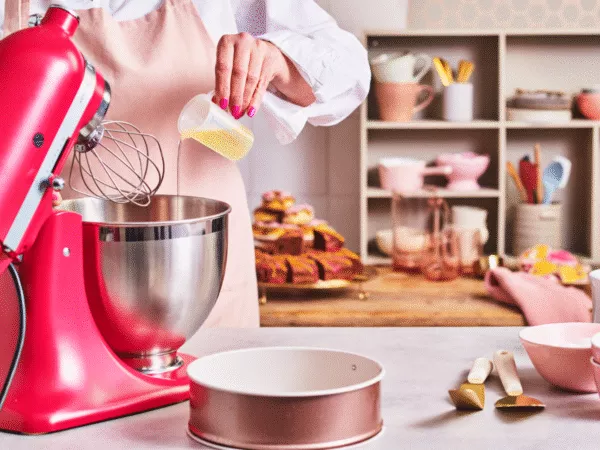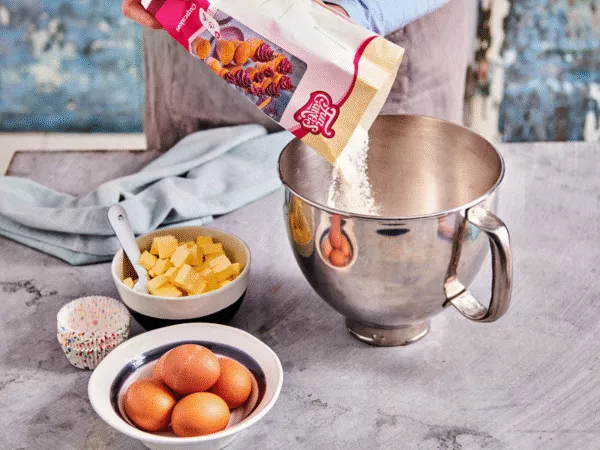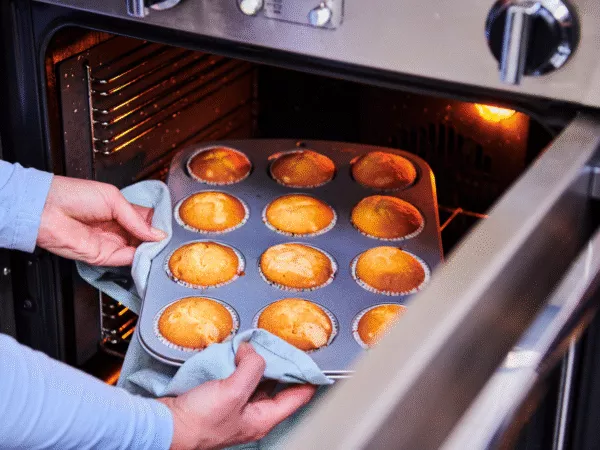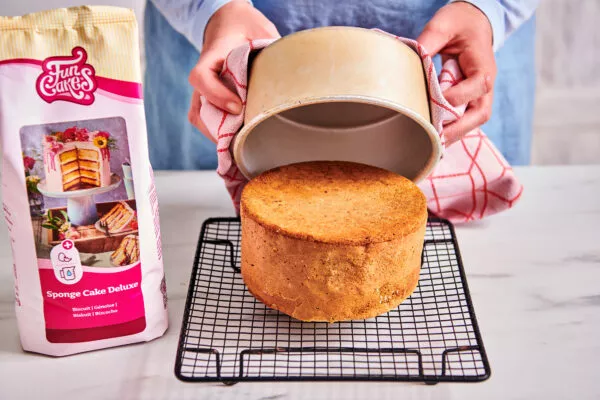The 10 biggest mistakes beginner bakers make (and how to avoid them)
You’ve tied your apron, preheated the oven and have your FunCakes mixes ready and yet something goes wrong. The cake sinks, the frosting melts, or the cake sticks to the baking pan. Sound familiar? You’re not alone! We’ve listed the 10 biggest mistakes beginner bakers make, along with our top tips to help you avoid them.

Going by feel instead of measuring accurately
Many beginners skip precise measuring. Unlike cooking, where you can rely on taste, baking is a science: too much flour or too few eggs can ruin the texture or leave your cake dry. Using FunCakes mixes means the ratios are calculated for optimal results, so use them!
To avoid this: use a digital kitchen scale or a measuring cup and follow the package instructions carefully.

Using cold ingredients not at room temperature
Another common mistake is using eggs, butter, or milk straight from the fridge. Cold ingredients mix poorly, which can cause your batter to curdle or your cake to bake unevenly.
To avoid this: leave eggs, butter and milk out at least 30 minutes before baking, unless the recipe says otherwise.
Many beginners think mixing longer equals better batter. In fact, overmixing activates gluten, resulting in a tough cake instead of a light, fluffy one.
To avoid this: start at low speed and stop mixing as soon as the batter is smooth. Stick to the instructions on the packaging.
Some bakers put their batter into an oven that isn’t hot enough yet. This causes the cake to start rising before the oven is up to temperature, often leading to a collapsed cake.
To avoid this: always preheat your oven to the correct temperature before putting in the batter, this ensures even baking.

Opening the oven too frequently during baking
Curiosity often makes bakers open the oven too soon, causing heat to escape. This disrupts the rising process and can cause your cake to collapse.
To avoid this: resist the urge to peek. Only open the oven at the end of baking time to test with a skewer. If it’s not done yet, close the oven quickly and bake a bit longer.
Using a different size or material baking pan than called for can affect the baking time and texture. A baking pan that’s too small causes overflow, whereas one that’s too big leads to a dry and flat cake. Baking pan choice matters more than you think.
To avoid this: use the baking pan specified in the recipe. Or check the FunCakes Quantity calculator to find the right size and ratios.
Decorating while the cake is still warm can cause frosting or chocolate to melt and run, making a messy result.
To avoid this: cool the cake fully on a wire rack before filling, frosting, or decorating. Try using FunCakes Enchanted Cream® or buttercream!

Cake sticking to the baking pan
A cake that sticks is frustrating and may break when removing it. This often happens because the baking pan wasn’t greased or prepared with parchment paper.
To prevent this: always use baking spray or butter and line the bottom with parchment paper so your cake releases cleanly.
You’ve pulled your cake out after the recommended time, only to find it’s underbaked inside. Cooking time alone isn’t a guarantee. Ovens, baking pans and conditions vary, so you may need to adjust the time.
To avoid this: after the suggested time, poke the cake a few times with a skewer. If it comes out clean, it’s done. If there’s batter on it, bake a bit longer.
Beginner bakers often put too much pressure on themselves to make perfect cakes, which leads to frustration or disappointment. Remember, baking is a process: you learn, experiment and taste! It doesn’t have to be perfect on the first try.
To avoid this: accept that mistakes are part of learning and focus on enjoying baking. Looking for an easy recipe to start? Visit the FunCakes website for beginner-friendly recipes. With these simple recipes, you’ll surely succeed!